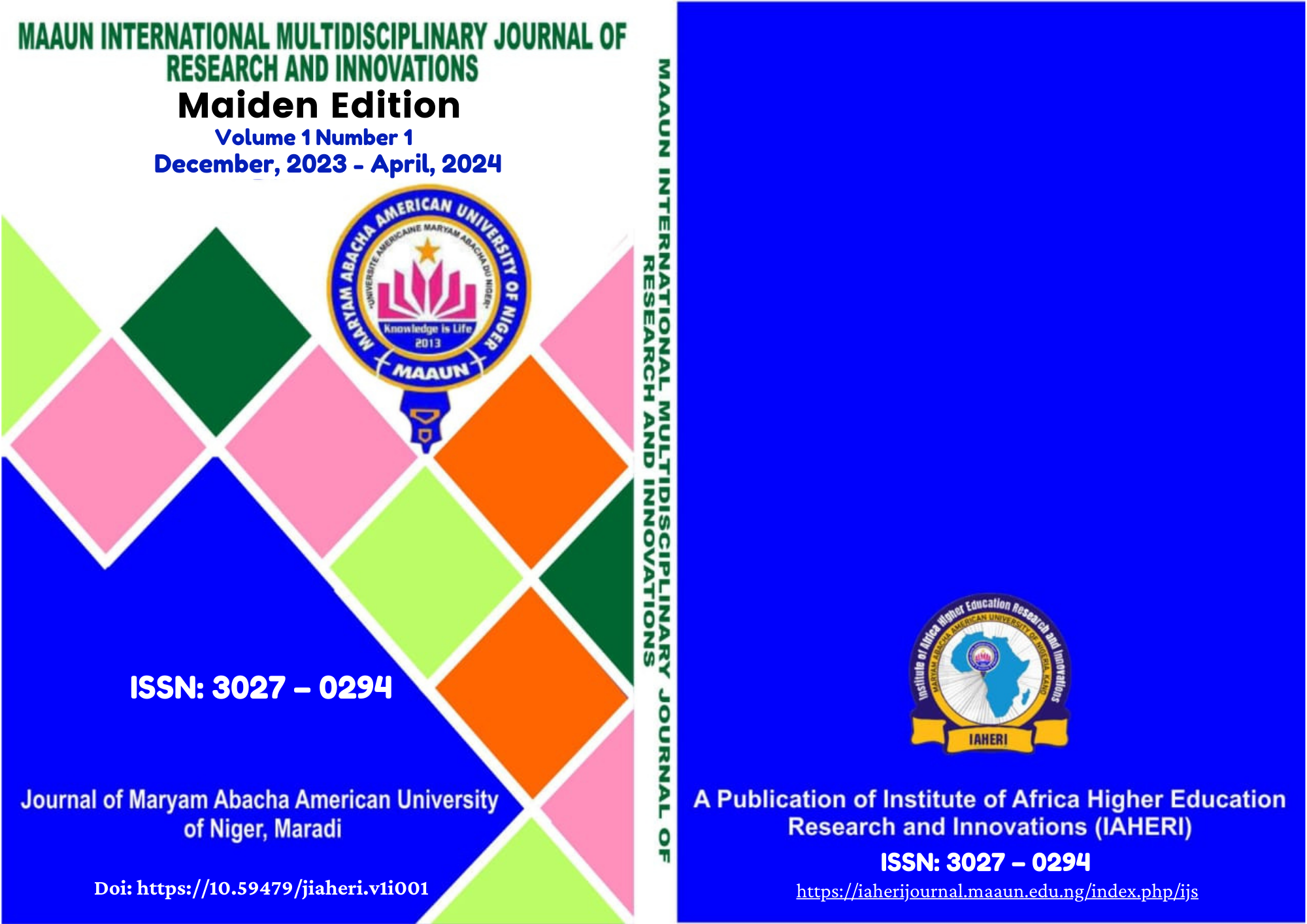Published 10/16/2024
Keywords
- Pattern,
- Distribution,
- Open Defecation,
- Practices
How to Cite
Abstract
Nearly one (1) billion people still practice open defecation globally, and a further 1.4 billion use unimproved toilet facilities. Up to one hundreds and five (105) million Nigerians still do not have access to safe and improve toilets facilities; and out of this figure, nearly forty (40) million practices open defecation in Nigeria. The overall aim of the study was to determine the pattern of distribution Open Defecation (OD) practice in Kano State, Nigeria. The study was conducted using a mixed design by combining both quantitative and qualitative techniques. A total of 423 head of households participated in the quantitative study within six (6) LGAs in Kano State and Twelve (12) communities were observed for evidences of OD practices. Findings from the study revealed that 30% of the respondents were within 26-35 years and are mostly (79.9%) males with 37.2% of them having a family size of 6-10 persons. The findings showed that 95.7% had toilet facility at home but 47.0% currently reported practice of open defecation. The results of observation showed that more than half of the 12 communities observed lacked public toilets and 8 out of 12 communities observed were categorized to be of moderate and high level of open defecation practice. The study concluded that there was high level of open defecation in the State with close to 50% of the respondents practicing open defecation. It was therefore, recommended that public health nurses, Kano State Government, community leaders and community members have an important role such as mass campaign, review of all outdated policies on OD.
References
- Adedigba, A. (2019, November 25). Nigeria worst African country in open defecation, second globally. Report” Premium Times.
- Babalobi, B. (2014, November 17). eWASH. Retrieved December 27, 2017, from World toilet day:http://assemblyonline.info/worldtoiletday/
- Citypopulation. (2021, November 07). Nigeria: Federal, States and major cities-statistics and maps on city population. Retrieved December 19, 2021, from citypopulation.de: http://www.citypopulation.de/Nigeria-Cities.html
- Clasen, B., Schmidt, B. S., Fung, I., & Jenkins, S. (2014, June 6). Interventions to improve disposal of human excreta for preventing diarrhoea. USA.
- Essuman, M. (2015). Addressing Open Defecation Sanitation Problem: The case of Dry Toilet Implementation in the Wa Municipality, Ghana. Raseborg: NOVIA.
- Iliffe, J. (2017). Africans: The History of a Continent. Chicago: Cambridge University Press.
- John, C. a. (2017). Open Defecation in Newly Created Kenyan Counties: A Situational Analysis. Journal of Health Care for the Poor and Underserved, 28(1), 71–78.
- Joint Monitoring Programme. (2019). Progress on sanitation and drinking water: 2010 update,WHO/UNICEF Joint Monitoring Programme for Water Supply and Sanitation.
- Retrieved April 29, 2018, from http://www.who.int/water_sanitation_health/publications/9789241563956/en/index.html
- Mollins, J. (2018). Next UN development goals must tackle open defecation –expert. Thomson Reuters Foundation.
- Mondal, P. (2020, May 09). Rural-Urban Differences: Demographic and Socio-Cultural Characteristics. Your Article Library, pp. 1-3.
- Musbau, R. (2014, November 26). Breaking the silence on open defecation. Lagos, Lagos, Nigeria: The Nation.
- O'Connell, K. (2014). What Influences Open Defecation and Latrine Ownership in Rural Households?: Findings from a Global Review. Washington DC: WSP.
- Olajuyigbe, A. (2016, December). Elimination of Open Defecation in Osun State, Nigeria: The Need for a Roadmap. Osogbo, Osun.
- Tessema, R. A. (2017). Assessment of the implementation of community-led total sanitation, hygiene, and associated factors in Diretiyara district, Eastern Ethiopia. PLoS ONE, 12(4), 111.
- UN. (2014, May 18). Open Defecation. Retrieved September 18, 2016, from United Nation: http://www.unmultimedia.org/tv/unifeed/2014/05/un-open-defecation.
- UNICEF. (2020, February 10). Open Defecation: UNICEF supports 10 LGAs in Kano. Vangurd, pp. 2-4.
- UNICEF/WASH. (2017). Access to improved sanitation in Nigeria. New york: UNICEF.
- WHO. (2015). make every mother and child count. Geneva.
- WHO and UNICEF. (2015). Joint Monitoring Programme for Water Supply and Sanitation. Progress on sanitation and drinking water – 2015 update. Geneva: WHO/UNICEF.
- WHO/UNICEF. (2014). Progress on Drinking Water and Sanitation Report 2012. New york: WHO/UNICEF.
- WHO/UNICEF. (2018). Progress on Drinking Water and Sanitation. Special Focus on Sanitation. Retrieved january 14, 2018, from www.sanitation.org.
- Yaw, O. A. (2010). Enhancing sanitation services delivery in the Ejura-Sekyedumase District. Kumasi: Kwame Nkrumah University of Science and Technology.

